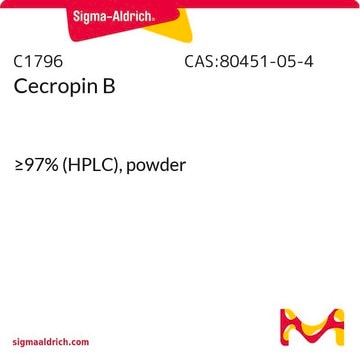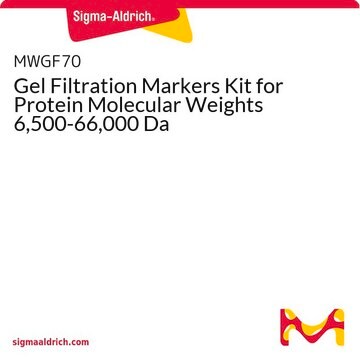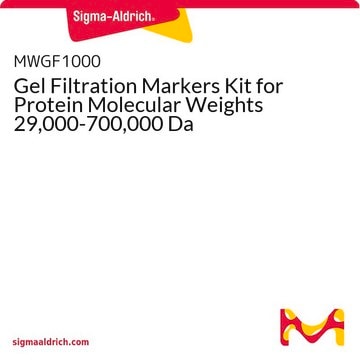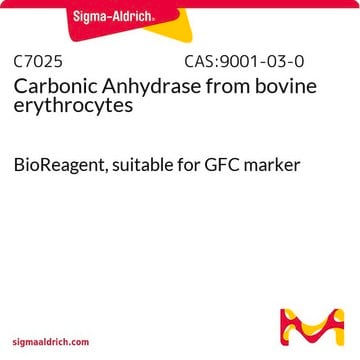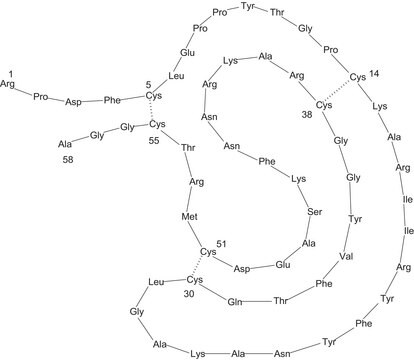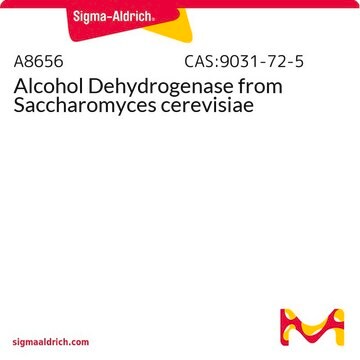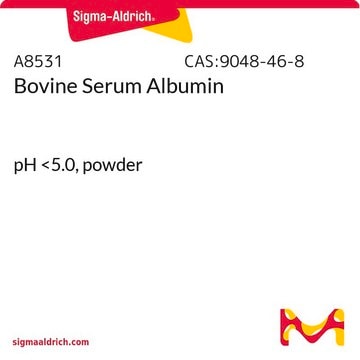This is determined by a spectral assay. The detailed assay procedure (operating procedure #11252) may be requested from Sigma St. Louis Technical Service ([email protected]).
C7150
Cytochrome c from equine heart
BioReagent, suitable for GFC marker
Synonym(s):
Cytochrome c from horse heart
About This Item
Recommended Products
product line
BioReagent
Quality Level
form
powder
mol wt
~12,400
packaging
vial of ≥10 mg
suitability
suitable for GFC marker
storage temp.
−20°C
Looking for similar products? Visit Product Comparison Guide
Application
Biochem/physiol Actions
Other Notes
Storage Class Code
11 - Combustible Solids
WGK
WGK 3
Flash Point(F)
Not applicable
Flash Point(C)
Not applicable
Personal Protective Equipment
Choose from one of the most recent versions:
Certificates of Analysis (COA)
Don't see the Right Version?
If you require a particular version, you can look up a specific certificate by the Lot or Batch number.
Already Own This Product?
Find documentation for the products that you have recently purchased in the Document Library.
Customers Also Viewed
Protocols
Gel filtration chromatography is an established method for determining the size and molecular mass of proteins.
Chromatograms
application for HPLCapplication for HPLCapplication for HPLC-
How do I determine how much Product C7150, Cytochrome c, is in the oxidized form, and how much is reduced?
1 answer-
Helpful?
-
-
Is Product C7150, Cytochrome c, predominantly in the oxidized form or the reduced form?
1 answer-
This product is not assayed for the percentage oxidized or reduced. However, based on the method of preparation, we would expect it to be predominantly in the oxidized form.
Helpful?
-
-
What is the Department of Transportation shipping information for this product?
1 answer-
Transportation information can be found in Section 14 of the product's (M)SDS.To access the shipping information for this material, use the link on the product detail page for the product.
Helpful?
-
-
I see that you list several horse heart cytochrome c products. What are the differences, and which one should I choose?
1 answer-
Product No. C2506 is prepared with trichloroacetic acid (TCA), whereas C7752 is prepared with the milder acetic acid. The TCA method may reduce the amount of superoxide dismutase (SOD) present, but tends to cause dimerization or acid-modified structures of cytochrome c. In contrast, acetic acid preparations may have slightly higher amounts of SOD, but a lower proportion of dimeric cytochrome c. So C2506 would be recommended for enzyme activity studies that require low SOD, whereas C7752 is recommended for structural studies or binding studies, or for enzyme activity studies where possible SOD contamination is not a problem. Product No. C2867 is prepared from C2506; it is a BioUtra grade product, greater than or equal to 99% pure as determined by SDS-PAGE. It is recommended when an ultra-high purity is required. Product No. C3256 is also prepared from C7752; it is isolated by ion-exchange chromatography. This fraction shows a high rate of ascorbic acid oxidation, but low activity in a cytochrome oxidase system. Product No. C7150 is also prepared from C7752; it is suitable for use as a gel filtration molecular weight marker.
Helpful?
-
-
How should I store solutions of Product C7150, Cytochrome c?
1 answer-
Our general recommendations are as follows: Store at -20 °C (freezer) for up to six months. Store at 2-8 °C (refrigerator) for up to two weeks. Store at 20-25 °C (room temperature) for up to three days. According to J. Biol. Chem, 237, 2161-2174 (1962), cytochrome c is stable to boiling, and over an unusually wide range of pH values. However, it denatures readily at extreme pH (low or high), and in high concentrations of organic solvents, such as ethanol or acetone.
Helpful?
-
Active Filters
Our team of scientists has experience in all areas of research including Life Science, Material Science, Chemical Synthesis, Chromatography, Analytical and many others.
Contact Technical Service